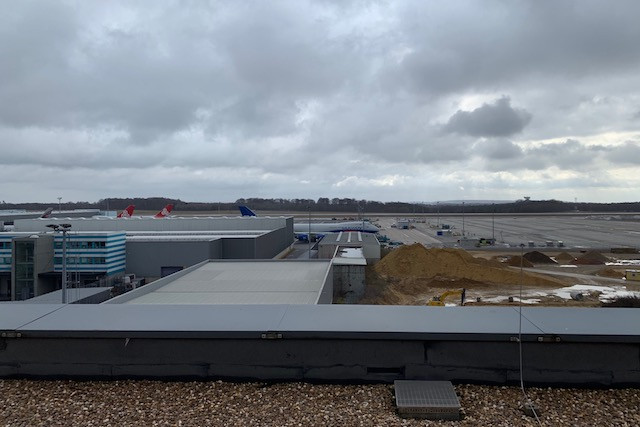The freeport, located at Findel airport, is a high security depot for expensive items like artworks and wine. Owners store their goods via intermediaries called licensed freeport operators, which receive their permits from Luxembourg’s customs service.
Insurance premiums
“We don’t do tax evasion”, but “do insurance premium reduction”, said Carole Schmitz, commercial and events director at the Luxembourg Freeport. She pointed to the facility’s performance in the “Global Risk Assessment Platform” review of high safety and security buildings in the world conducted by the French insurer Axa. In 2014, the site received a 99% score; in 2017, 99.6%. This rating is an “advantage” with insurance companies that can cut clients’ insurance premiums in half, according to Schmitz.
“Our job is security. That’s what we can give to people,” Philippe Dauvergne, CEO of the Luxembourg Freeport, told Delano this week. He was previously a law enforcement official in France, serving as director of customs in the Seine-et-Marne department (in the Greater Paris area) and as an officer in a joint task force against organised crime.
Dauvergne and Schmitz outlined several safety and security precautions during a two hour interview and site visit on 11 February.
One set of measures is that different bodies are responsible for different steps in the security process, so there’s no “key man or key woman” to exploit, said Dauvergne. For example, Luxembourg Police are responsible for perimeter security, the Luxembourg Freeport is responsible for access into and out of the site, and Luxembourg’s customs agency is responsible for screening and tracking goods stored inside the facility. Anomalies are automatically reported electronically to both freeport security and the customs agency.
Getting inside the Luxembourg Freeport
All visits, both lorries and people, need to be scheduled at least 24 hours in advance. Otherwise they won’t be admitted inside. All entries, exits and movements within the site are tracked in a database accessible to security personnel and law enforcement agencies.
People pass through a locked gate and a sally port, before having their passport scanned against a police database and going through an airport-style security checkpoint.
Lorries are subject to extensive checks in a holding area. They are scanned for explosives (there’s a risk of terrorist attack, said Dauvergne) and for hidden people (potential thieves). During one such search, a magnetic device detected an “intruder”, launching a police squad into action. They later found it was a mouse, Dauvergne recalled.
Later, crates are scanned for hidden substances and to verify the quantity and type of objects inside match up to the declared contents. Crates are then unpacked in the presence of customs officers and their contents inspected by licensed freeport operators.
The operator then transports the items to their storage unit.
Secure storage areas
At checkpoints fingers are scanned for vein-prints, not fingerprints (so don’t bother cutting off his finger, joked Dauvergne). Each unit is secured separately. If personnel attempt to enter an area where they don’t belong, an alarm is automatically triggered.
The walls have sensors to detect anyone trying to drill into another room. The fire suppression system uses nitrogen, not damaging water. Emergency generators can keep the power running at full steam for 3 days if needed.
Schmitz said there’s 11,000 square meters of rentable storage space, including a wine cellar that holds 400,000 bottles, a tier 1 and tier 2 data centre, and an underground strongroom protected by an 10 tonne armoured door. There’s also an art restoration workshop, where experts come to work onsite instead of transporting the artwork, which Schmitz said also saves on insurance premiums.
End clients, for example, owners of artwork, never have access to storage areas; only licensed operators do. They can only see their objects, by appointment, in one of 8 showrooms (these movements are recorded for customs too) and objects can’t leave this area.
See a Bansky
The freeport realised that it needed to be more open with the Luxembourg community a couple years ago, said Schmitz. They started holding “open days” in the site’s exhibition hall. The next event will feature a never-before-seen work by Bansky and pieces by Lucas Cranach, El Greco and other artists (with permission of the works’ owners) on Sunday 31 March from 10:30am to 5pm.
No advance registration is required, but visitors will need a valid ID that will be checked electronically.
